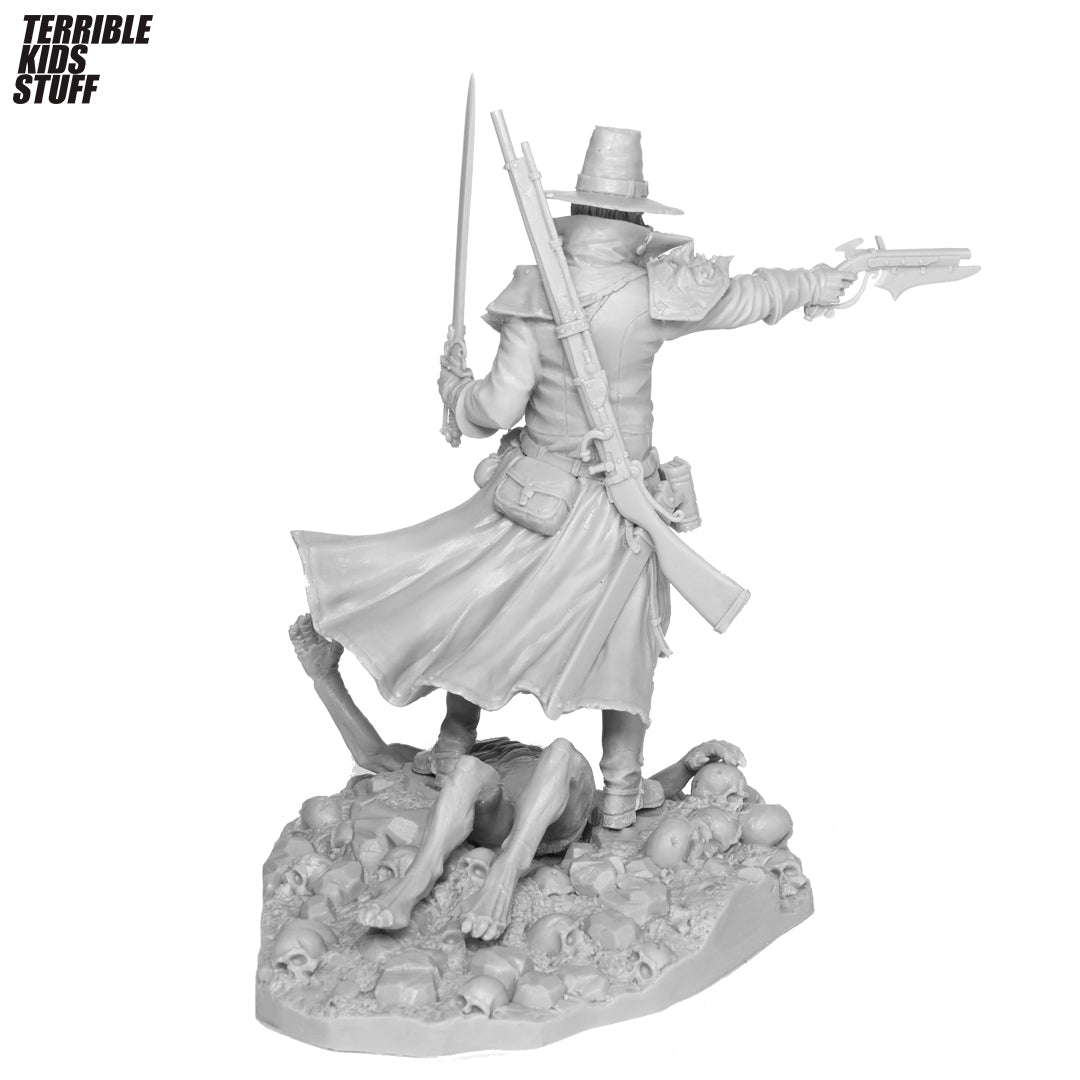

There has only ever been one female wizard on the main Discworld continent, as described in the events of Equal Rites. Despite the opinions of wizards and witches on this subject (that systemization comes easier to men and intuition comes easier to women), there appears to be no reason for this beyond cultural bias. Generally speaking, witches are women and wizards are men. The most powerful Discworld voodoo-women can deliberately create moderately powerful gods for a specific purpose. ĭiscworld Voodoo is considered to be an aspect of witch magic, combined with a sort of do-it-yourself religion, relying heavily on the power of belief. Although magical talent tends to run in families, witches do not teach their daughters, feeling that this would cause a sort of magical inbreeding. Unlike wizard magic, which is taught en masse, witch magic is taught on a one-to-one basis by older witches to apprentices.
TINY WITCH HUNTER HEN FULL
a fresh egg, an insect kept alive in a matchbox, etc.), and they must also "look right." Miss Tick has also compared shambles to "one of those expensive penknives", when she was explaining about them to Tiffany Aching, in A Hat Full of Sky. They're assembled in a matter of seconds, using any stuff one happen to have on their person, like strings, feathers, beads, coloured paper, etc., and must also incorporate something alive in the centre (i.e. It's trickery.), it's simply "something to be magical through," in the same way that a pair of spectacles "help you to see, but don't see for you," and the same way that a bow "stores up muscle power as the archer draws it, and sends a heavy arrow much further than the archer could actually throw it." The trick behind how a shamble works lies in its assembly and use, which is to "catch the moment". There is also the art of making a "shambles," a kind of magical handmade device or construct used by witches for such uses as detecting or amplifying magic, for protection (like a "curse net"), or for sending out a spell the device itself is not magical ("Not exactly. Witches unironically acting with melodrama, of which cackling is an early sign, is often an indication of "going to the bad" and becoming a stereotypically wicked witch.Īnother later addition to witch skills, established in Maskerade, but first named in the Aching books, is First Sight-seeing what's really there instead of what you hope to, expect to, or what others see-and Second Thoughts-thinking about the way you're thinking. Headology is more commonly used on people, like the placebo effect. The same zen-like knowledge that gives them this ability generally discourages them from making a big deal about it beyond refusing to take wizards seriously. As a result, it is less energy-intensive, which means that a witch can technically do more than an equally-powerful wizard. This can be taken very far-a witch's way of magically setting fire to a log of wood consists of staring at the log until it spontaneously combusts from pure embarrassment. Witches rarely do any magic, in fact, relying more on common sense, hard work, and a peculiar brand of psychology known as headology. Witch magic is very different from the wizard magic taught in the Unseen University, and consists largely of finding the right lever that makes everything else work. The three witches are portrayed as more sensible and realistic than the often-foolish residents of the Discworld, and Granny Weatherwax "especially tends to give voice to the major themes of Pratchett's work." Overview The three main witches introduced in 1988's Wyrd Sisters - crone Esme Weatherwax, mother Nanny Ogg and maiden Magrat Garlick - are a spoof on the Three Witches in Shakespeare's Macbeth, and a tongue-in-cheek reinterpretation of the Neopagans' Triple Goddess. JSTOR ( May 2021) ( Learn how and when to remove this template message)Ī major subset of the Discworld novels of Terry Pratchett involves the witches of Lancre.Unsourced material may be challenged and removed.įind sources: "Witches" Discworld – news Please help improve this article by adding citations to reliable sources.

The article may include original research, or omit significant information about the subject. These sources can be used to expand the article and may be described in edit summaries or found on the talk page. An editor has performed a search and found that sufficient sources exist to establish the subject's notability.


 0 kommentar(er)
0 kommentar(er)
